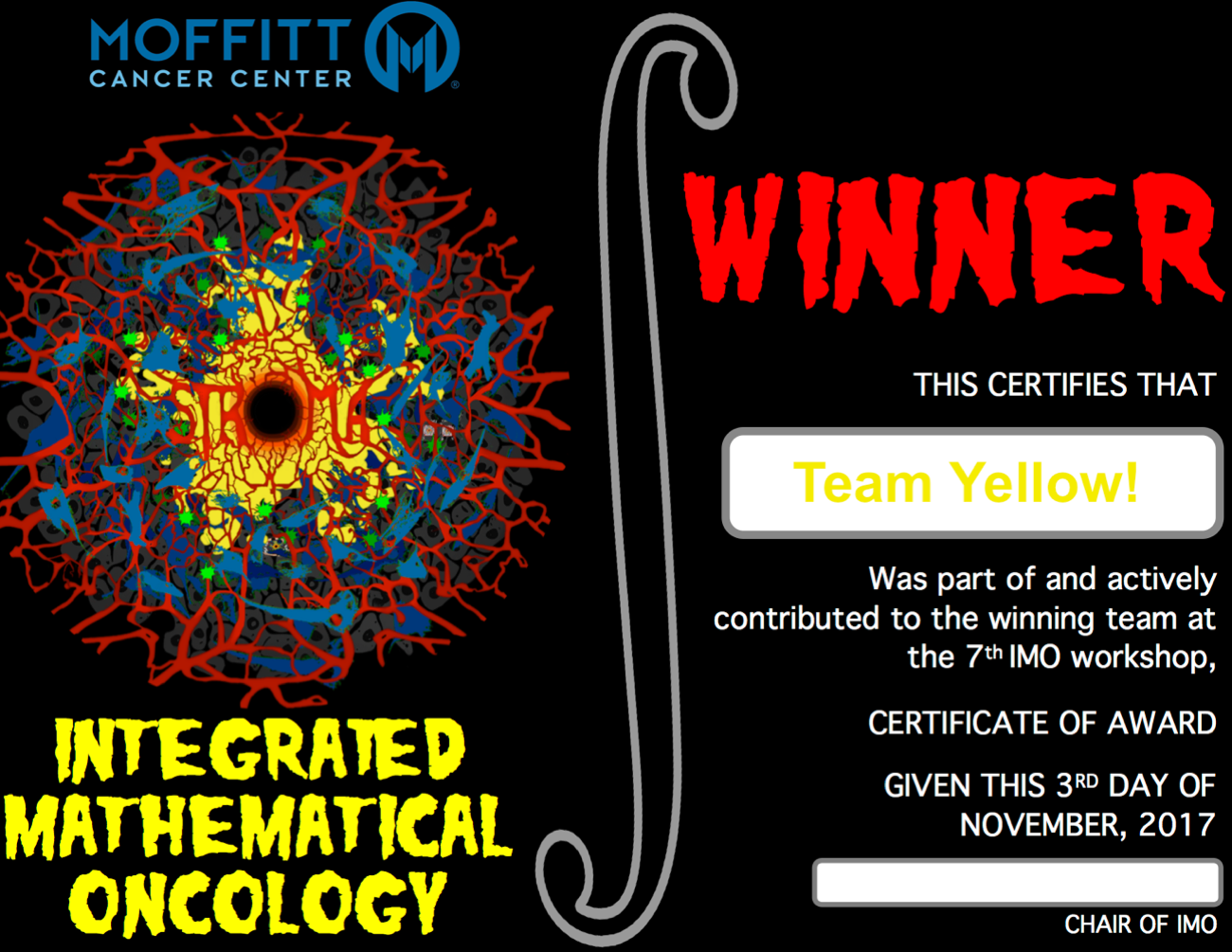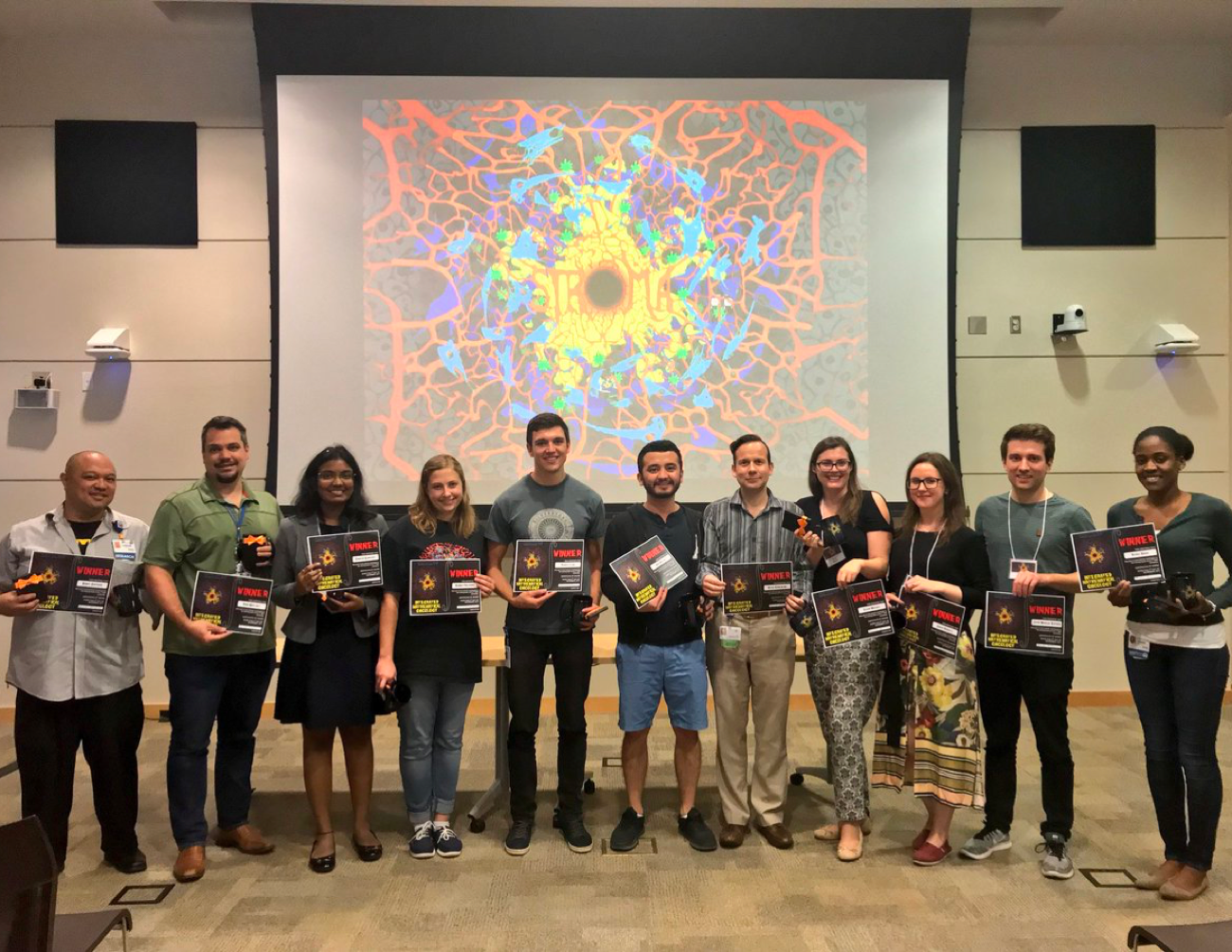IMO 7: Stroma

The role of Stroma in Cancer
The tumor microenvironment is not simply the extra cellular matrix, but a complex milieu consisting of growth promoting and inhibiting factors, nutrients (including oxygen and glucose), chemokines, and importantly other cell types including (but not limited to) fibroblasts, immune cells, endothelial cells and normal epithelial cells. These microenvironmental factors and different cell types interact with one another and the tumor as it grows. The role of endothelial cells and the immune system in cancer development are fairly well established, but less is known about the function of host fibroblasts in this process. Most solid tumors present as dense fibrotic masses, which suggests that fibroblasts contribute to tumor growth by infiltrating and depositing extracellular matrix proteins. In addition, the phenotype of fibroblasts found within and around tumors (activated fibroblasts or cancer associated fibroblasts: CAFs) is different to normal fibroblasts, and closely resembles myofibroblasts. Fibroblasts act in wound healing, angiogenesis and tissue remodeling by releasing growth factors and proteases such as matrix metalloproteinases. They also deposit matrix proteins such as laminin, tenascin and fibronectin. Therefore, if the growing tumor can co-opt such fibroblasts it has an unlimited source of many of the fundamental elements required for growth and invasion. The focus of workshop 7 is to better understand the complex dialogue between the tumor and the stroma, and how to potentially harness it therapeutically.
Presenting the Research Question
Team Yellow
#TeamYellow with help from @DrMathy_PhD define the question they plan to work on for the next 4 days #MoffittIMO pic.twitter.com/v80bemb3L5
— Sandy Anderson (@ara_anderson) October 30, 2017
Team Green
#TeamGreen co-leader @dbasanta defines their question #MoffittIMO pic.twitter.com/vLJxKxwemy
— Sandy Anderson (@ara_anderson) October 30, 2017
Team Blue
#TeamBlue co-leader @AndriyMarusyk defines their question #MoffittIMO pic.twitter.com/JvQUTj0eor
— Sandy Anderson (@ara_anderson) October 30, 2017
Team Orange
#TeamOrange co-leader & Department Chair of Gynecologic Oncology, Robert Wenham defines their question #MoffittIMO pic.twitter.com/JZd0TduXeC
— Sandy Anderson (@ara_anderson) October 30, 2017
Team Red
#TeamRed co-leader @MRobertsonTessi presents their question #MoffittIMO pic.twitter.com/oEzQJ4gfRd
— Sandy Anderson (@ara_anderson) October 30, 2017
And the winner is...
Winning team: specific aims
"Steering tumor-stroma-immune ecosystem evolution for immune-modulated BC control"
Breast cancer (BC) is the most common cancer in women with approximately 250,000 estimated cases in the US in 2017, of which more than 40,000 patients are estimated to succumb to their disease.(PMID: 28055103) The pathological complete response (pCR) rate after neoadjuvant chemotherapy (NCT) ranges from 6-33% for different BC histologies.(PMID: 24794243) There is dire need to understand the biological contributors underlying responses in order to improve these outcomes, and to identify biomarkers that help drive patient-specific treatment approaches. The tumor-stroma ratio has been shown to be prognostic for breast cancer outcome.(PMID: 24874480) Preliminary analyses of TCC and TCGA data showed that stromal abundance of less than 50% in histological BC samples for which NCT is indicated correlates with significantly greater 5-year survival (80% vs. 65%, p=0.023, log-rank). Inversely, abundance of tumor infiltrating lymphocytes (TIL) above the median of 0.99% suggested better survival. This is in agreement with reports that prevalence of tumor infiltrating lymphocytes (TIL) in pre-treatment BC biopsies correlates with improved pCR following NCT.(PMID: 25501357) Tumor and TIL have been shown to activate cancer associated fibroblasts (CAF) that cause collagen densification, an extracellular matrix molecule previously thought to primarily play a structural role and serve as a physical barrier in the tumor microenvironment.(PMID: 17932231) However, inhibitory receptors for collagen have been recently described on lymphocytes raising the possibility that collagen is a biologically active molecule capable of affecting physiologic change.(PMID: 16754721) Our preliminary in vitro data demonstrates significant reductions in lymphocyte homeostatic proliferation, which may represent a novel mode of tumor escape from immune surveillance in highly fibrotic microenvironments. As collagen, CAF, and TIL are reciprocially regulated, it becomes paramount to understand how the different stromal components not only interact with the tumor but also with one another, and how these interactions are pertubed by treatment and thus contribute to therapeutic response. Then, treatment response and ultimately outcome may be linked to the patient-specific Tumor-Stroma-Immune Ecosystem (TSIE) prior to and its evolution during therapy.
Central hypothesis
To improve BC teratment outcomes and to tailor therapeutic intervention it is essential to identify the dominant mechanisms underlying stroma activation and antitumor immune regulation. The effectiveness of neoadjuvant therapy for BC is a combination of the direct lethal effect of treatment on tumor, stroma and immune populations and, possibly more importantly, the subsequent indirect effects of suppressing the tumor-associated activated stroma and stimulating a successful antitumor immune response. The goals of the project are 1) to evaluate the cancer and TIL-induced stroma activation, and 2) to synergize clinical, experimental and mathematical models to identify how to use neoadjuvant therapy to shift a patient-specific TSIE toward immune-modulated tumor elimination. This may contribute to BC treatment personalization and improved outcomes. In order to investigate our hypothesis, we propose the following aims:
Aim 1
Determine treatment-induced shifts in Tumor-Stroma-Immune Ecosystem composition.
1A) Assess TSIE composition (multiplex immunohistochemistry, gene expression) prior to therapy in N=100 retrospective TCC biopsy samples and correlate TSIE composition with treatment outcome (pCR). 1B) Randomize patient samples into training (model calibration) and test (model validation) cohorts. Initialize the mathematical model with patient-specific TSIE compositions prior to therapy and simulate shifts in TSIE during therapy. Calibrate mathematical model dynamics using TSIE and outcome data from patients in the training cohort. Validate the model with simulations of treatment response of patients in the test cohort. Use the model to identify pre-treatment TSIE compositions for which NCT can and cannot provide tumor control with NCT.
Aim 2
Predict optimal treatment for immune activation and tumor control. Simulate if NCT can be de- escalated for patients with a favorable TSIE, and if escalated dose or alternative treatment (radiation [RSI], immuno-therapy [12-CK], or concurrent with NCT) could improve outcomes for patients with unfavorable TSIE.
These aims will motivate profound changes to how we conceive of neoadjuvant therapy for BC. Therapy can be understood as immunotherapy with the ultimate aim to boost antitumor immunity through perturbation of the patient-specific TSIE. For patients with a favorable TSIE, NTC could be de-escalated with focus on immune activation.9,10 For unfavorable TSIE, alternative treatment should focus on the perturbation of the TSIE toward immune-modulated tumor control. A patient’s TSIE may be assessable prior to therapy via immunohistochemistry11 and molecular gene signatures12 to personalize treatment.



